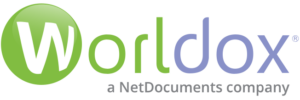The Solution: Worldox
Seven years ago, Toronto’s Cavalluzzo Hayes Shilton McIntyre & Cornish began the hunt for a document management system for our 37 lawyers and 35 support staff. Our three-person team included firm administrator Jayne Ivall, attorney/tech liaison Amanda Pask and me. Our goals were straightforward: we wanted a DMS with:
- Document profiling – the ability to save metadata fields, such as client/matter/author/document type
- The ability to track document versions
- Indexed text searching with advanced search options
- And our top priority: email management
Like many Canadian shops, we use Canada-based Corel’s WordPerfect, as well as Novell servers and GroupWise email. Because most legal software is designed for Microsoft products, we knew we faced a challenge to find a product that would work for our infrastructure.
So we procrastinated. And we grew. Initially, we were a small firm with an organized existing file structure. As we grew larger, we needed to get to data faster and our old structure needed to change. The tipping point: our e-mail volume became so overwhelming that we had to obtain a DMS to manage all the messages.
Our team considered two options: Open Text’s Document Management, eDocs Edition, (formerly Hummingbird) and Worldox from World Software.
Back-end setup was a major consideration as we compared the two. Open Text is a SQL-based DMS and I had encountered negative experiences with its three-tier setup in the past. With three-tier structure, there is the user interface or desktop application (tier 1), the business logic which is normally the server-based code (tier 2) that processes and sends requests to the third tier, the database (SQL).
We already had 16 (hardware and virtual) servers and SQL, and would have had to buy or provision another server. Also, if the Open Text SQL server were to go offline, our lawyers and staff could temporarily lose access to their documents.
Worldox has a dual database architecture (including native file/folder access from within Worldox) that mirrors the users’ hard drives, and uses a workstation as an indexer. The Worldox Indexer Application runs on a PC/workstation class machine and monitors all content such as documents and emails to extract and index the text for rapid retrieval of key word searching. The dual database approach combines a failure-resistant distributed database with a centralized, web-based data repository. This provides global access to document repositories and a redundant, fault tolerant database structure.
If the Indexer were to go down, we could still access our documents during the outage. We also learned that Worldox incorporates ISYS Search Software’s search technology — good news because we already used ISYS for indexed text searching across our network.
In January 2010, our team decided to move ahead with Worldox. We retained Pennsylvania-based Legal Software Connection’s Frank Jones, a systems integrator with 18 years of Worldox experience.
We worked with Jones and Worldox staff to create a customization that allows our matter lookup table text to be tagged and passed on to the Worldox Find dialog as Boolean “and/or” queries. Users can easily locate matters they want to search across, based on text entered in the billing system’s matter description. This feature was made standard in Worldox GX2.
We needed advanced GroupWise email integration with Worldox GX2, to augment the limited Extended MAPI support that GroupWise offered. Worldox enhanced the function, integrating sent mail, duplicate e-mail redundancy checking, and continuation of email threads (reply and forward) from within Worldox GX2. These GroupWise integration enhancements are also now standard in Worldox GX2.
We started the Worldox rollout on Saturday. January 30th and went live with Worldox on Monday, February 1, 2010. As part of the installation, we upgraded Citrix and installed Microsoft Word on 77 desktops, all in two days — over a single weekend. Though we are still a WordPerfect shop, we decided to install Word strictly for compatibility so we could collaborate with clients that have Word, and so a few users that prefer Word could use it more regularly.
Altogether, I logged 260+ hours leading up to and immediately in the two weeks following the rollout. I hired several contractors to help me with the Microsoft Word and Worldox rollout. In retrospect, I should have brought in more people for the rollout and coverage during the post-install. We uncovered and fixed a show-stopping GroupWise software bug in the process, too.
We also integrated Worldox into our Citrix-published applications. The Citrix XenApp5 integration was more complicated than I had envisioned and I had to switch from batch files to creating custom code using AutoIT to troubleshoot and manage the server processes, since the batch files didn’t work as well as I had hoped.
On Monday, February 1st following the installation, Legal Software’s Sandy Johnson did quick training with all our employees. She then spent the remainder of the week onsite, providing floor support and presenting seminars on more advanced aspects of the Worldox system. Some people were resistant to the change, but eventually they really started to embrace the system.
Our workflow closely resembles what our pre-DMS process was, except now we can find and save documents and emails faster, which saves us and our clients money.
Challenge:
To find a DMS that would work for our (at least partially) non-Microsoft infrastructure, AND could manage email.
Solution:
Worldox had the features we needed, and easier back-end set-up. It was the obvious choice.
Result:
We got several customized options that later become standard GX2 features. It works exactly as promised, and our staff is embracing the new system.

